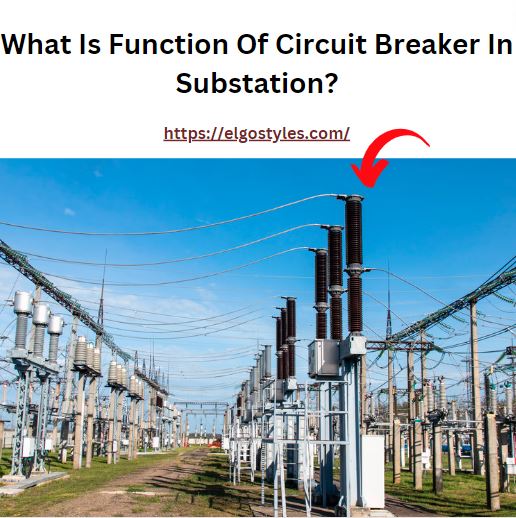Answer:
The function of a circuit breaker in a substation is to interrupt the flow of electrical current in case of overloads, short circuits, or other faults. This action protects the electrical system, equipment, and personnel from damage or injury.

Reasoning:
Circuit breakers serve as crucial safety devices in substations by swiftly disconnecting electrical circuits during abnormal conditions. When excessive current flows through a circuit, a breaker trips to prevent damage to transformers, generators, and other equipment. Similarly, in case of a short circuit, a breaker isolates the faulty section, preventing widespread disruptions and ensuring efficient power distribution.
FAQs:
What is a circuit breaker in a substation?
A circuit breaker in a substation is a switching device designed to interrupt the flow of electrical current when necessary.
How does a circuit breaker protect a substation?
By detecting and responding to overloads, short circuits, and faults, a circuit breaker prevents damage to equipment and ensures the safety of personnel.
What are the main types of circuit breakers used in substations?
The main types include air circuit breakers (ACBs), oil circuit breakers (OCBs), vacuum circuit breakers (VCBs), and sulfur hexafluoride (SF6) circuit breakers.
What causes a circuit breaker to trip in a substation?
A circuit breaker trips due to excessive current flow, short circuits, ground faults, or equipment malfunctions.
How does a circuit breaker reset after tripping?
Circuit breakers typically require manual or automatic reset procedures after tripping, depending on the type and design.
Can a circuit breaker be manually operated in a substation?
Yes, some circuit breakers feature manual operating mechanisms for maintenance or emergency purposes.
What maintenance tasks are required for circuit breakers in substations?
Maintenance tasks include inspection, testing, lubrication, and replacement of worn-out components.
How do modern digital circuit breakers differ from traditional ones?
Modern digital circuit breakers offer advanced monitoring, diagnostic capabilities, and remote control features compared to traditional mechanical circuit breakers.
What is the role of a protective relay in conjunction with a circuit breaker?
Protective relays detect abnormal conditions and issue trip signals to circuit breakers, initiating the interruption of electrical current.
Are there specific standards governing the design and operation of circuit breakers in substations?
Yes, various international standards such as IEC and ANSI provide guidelines for the design, testing, and maintenance of circuit breakers in substations.
 Electrical Engineering World Wiring a Brighter Tomorrow!
Electrical Engineering World Wiring a Brighter Tomorrow!